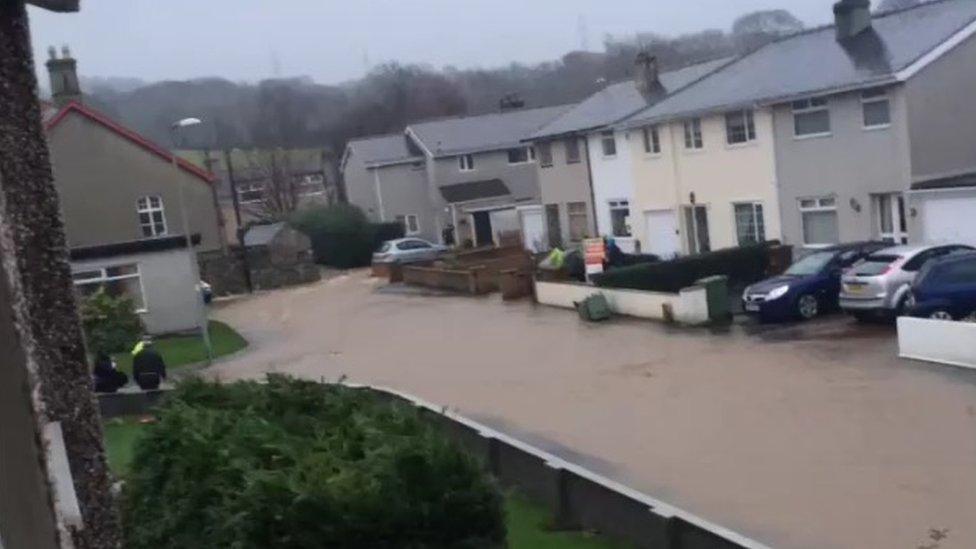Are Wales' flood defences working?
- Published
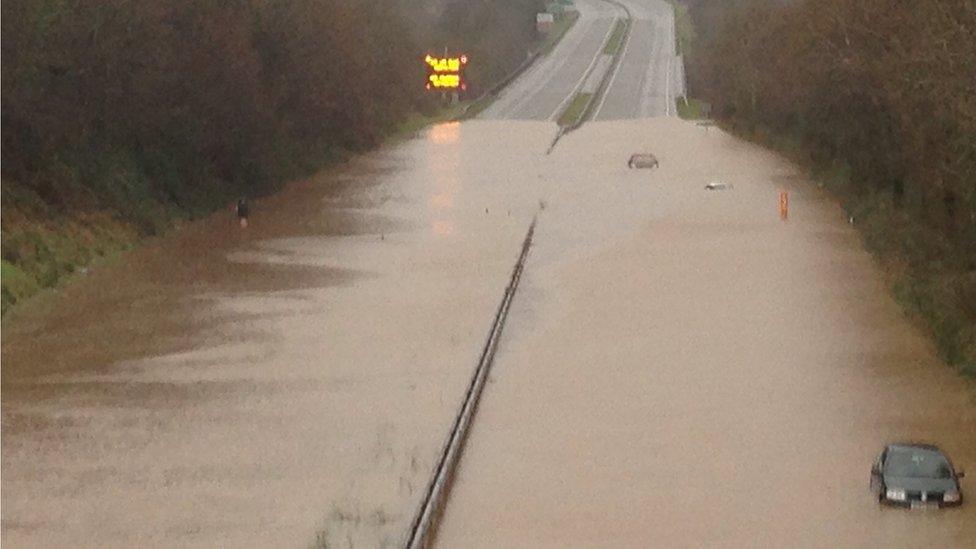
Cars were left stranded on the A55 at Llandygai, Gwynedd
Wales was battered by record levels of rainfall this winter, with flooding causing disruption in some places and thousands of properties being left without power.
Met Office figures released on Tuesday showed December 2015 was the wettest December on record for Wales, with 217% the average rainfall for the month. And it was the wettest calendar month in the UK since records began in 1910.
But despite 359mm (14in) of rain compared to 137mm (5in) in England, Wales did not see the same level of devastating floods which affected parts of the north of England, where there was widespread damage and large-scale evacuations.
So does this mean Wales' flood defences are working?
Natural Resources Wales said existing defences had protected Dolgellau in Gwynedd, and Llandudno Junction in Conwy - but with rising rainfall and changes in wind patterns, scenes like those in England could easily happen this side of the border.
The Met Office said the north of England was particularly badly hit because of a number of factors relating to wind patterns and weather fronts.
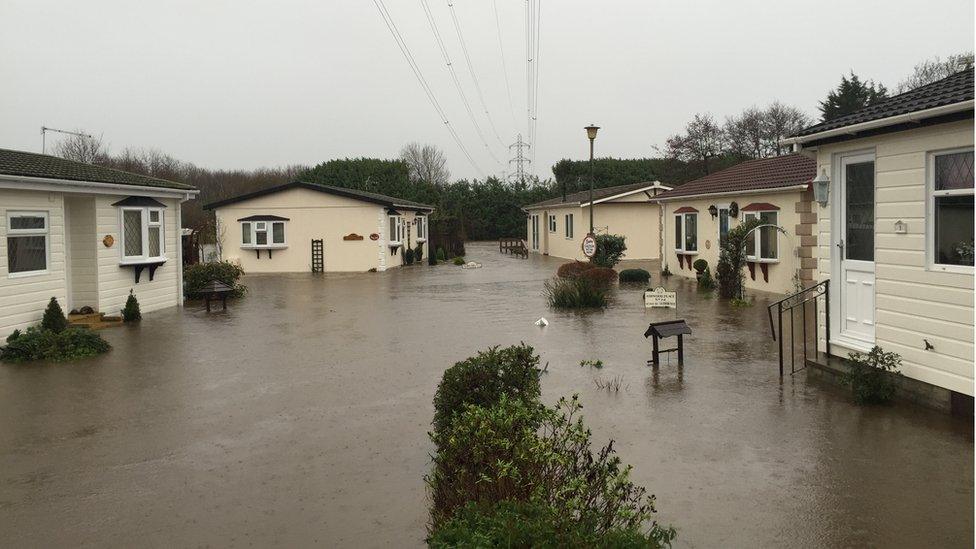
Homes were evacuated in Knaresborough, North Yorkshire
Wind direction and where weather fronts ended meant places like Cumbria were "in the firing line" for heavy rainfall, forecasters said.
While Wales also saw torrential downpours, once the rain has fallen other factors come into play including the size of rivers, the shapes of the hills and valleys - which affect what is happening on the ground.
Jeremy Parr, head of flood and operational risk management for Natural Resources Wales, said there were prolonged periods of heavy rain and the impact was felt widely across Wales - but flood prevention schemes and weather factors meant it did escape the worst of the UK's flooding disruption.
"The Met Office station in Capel Curig had record rainfall, with more than three times the average for December.
"However, the worst of the storms and rainfall tracked... to other parts of the UK and so the impacts there were much greater.
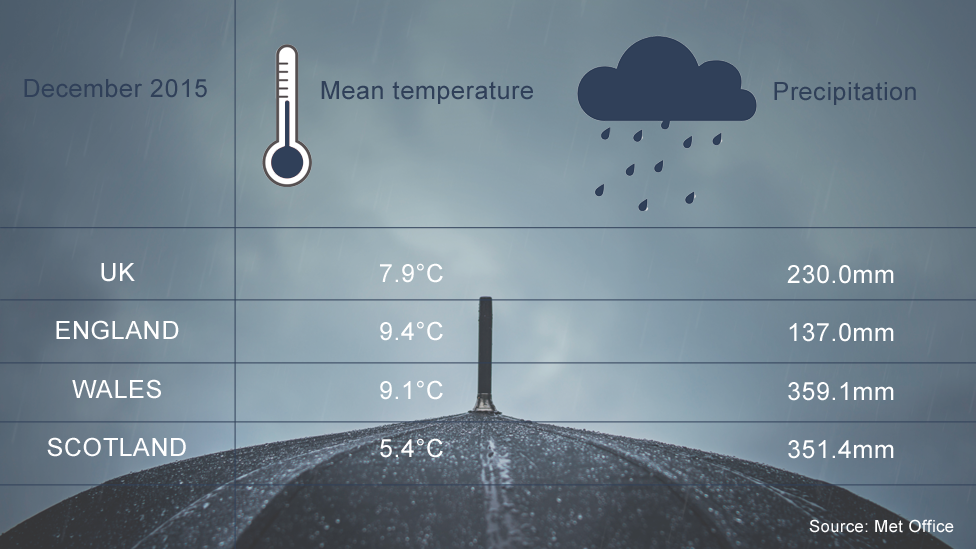
"While places like Dolgellau and Llandudno Junction did not flood this time thanks to the schemes which help protect them, we can never completely prevent all flooding. We need to learn to adapt to flooding, and there is no 'one size fits all' solution.
"We need a range of actions and sustained investment over a long period of time."
So what caused the UK's wettest month?
Environmental journalist George Monbiot said a "temperature anomaly" in the North Pole had caused an unusual wind pattern which affected England more than Wales.
"I know there was some quite serious flooding around mid Wales," he said.
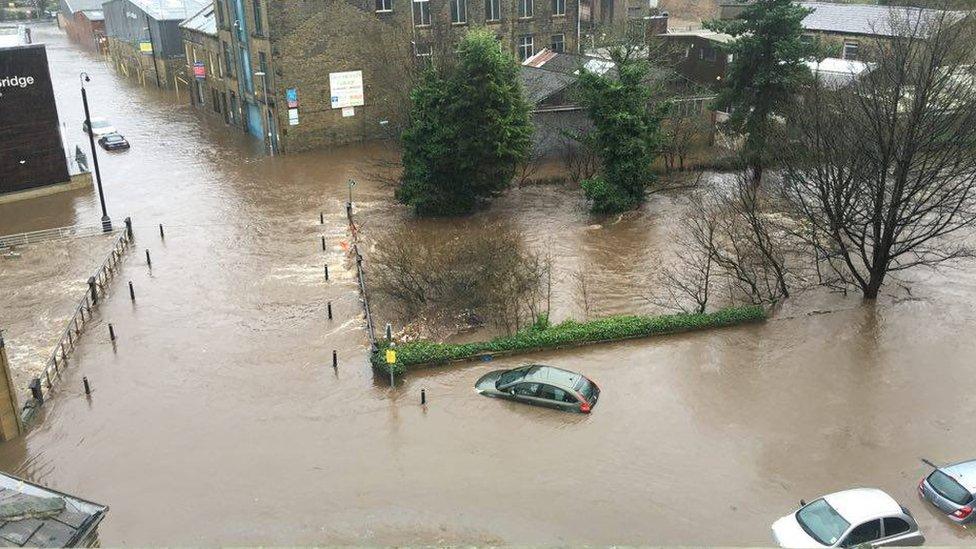
Sowerby Bridge in West Yorkshire was among the English towns hit by flooding
"But there was a really weird pattern of where the rain fell. I understand there was an incredibly weird temperature anomaly in the North Pole, where temperatures which would normally be -40C reaching 1C or 2C.
"This caused a powerful anti-clockwise wind flow sweeping clouds around, just clipping the edge of Wales but hammering England."
Mr Parr added that weather patterns were changing and more intense rainfall was becoming more frequent.
"The scenes over the border could very easily have happened here in Wales," he said.
The Met Office said it was also an exceptionally mild month, smashing the previous December record set in 1934 due to an "El Nino" phenomena, and a warmer atmosphere carries a larger amount of moisture.

Analysis: BBC senior meteorologist Derek Brockway
El Nino may be another reason for the wet and mild weather. It is a band of unusually warm waters over the tropical pacific oceans.
It forms naturally every few years and disrupts weather patterns all over the world, bringing torrential downpours to California and drought to Australia.
In the UK, the consequences are less clear.
December 2010 was the coldest for a century, with snow and ice causing chaos across Wales.
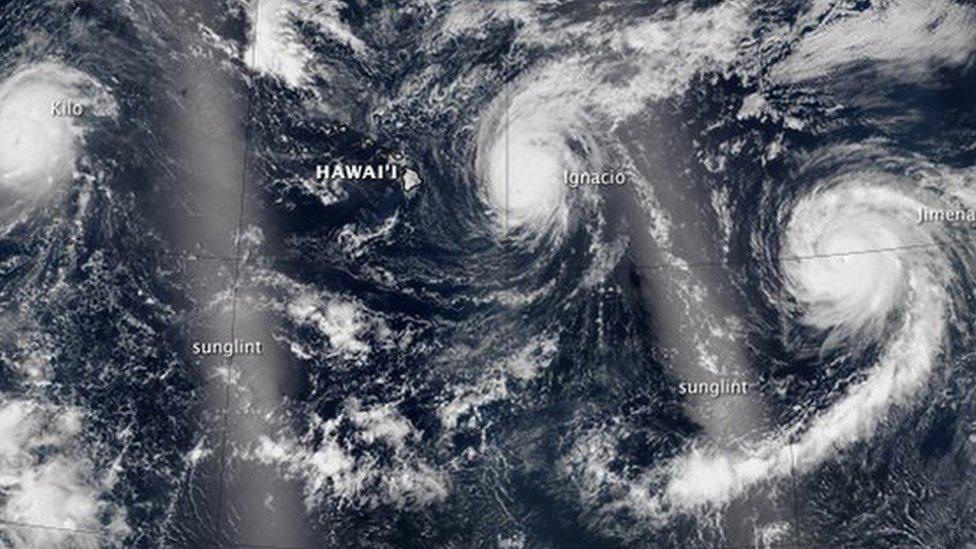
Three category four storms seen together in the Pacific for the first time during an El Nino climate event

Flood advice
People living in flood risk areas can do some things to help be prepared should the worst happen:
Check your flood risk
Check if you can sign up to free flood warnings
Know what to do when a flood happens - prepare a flood plan for yourself and for your community
Source: Natural Resources Wales
- Published3 January 2016
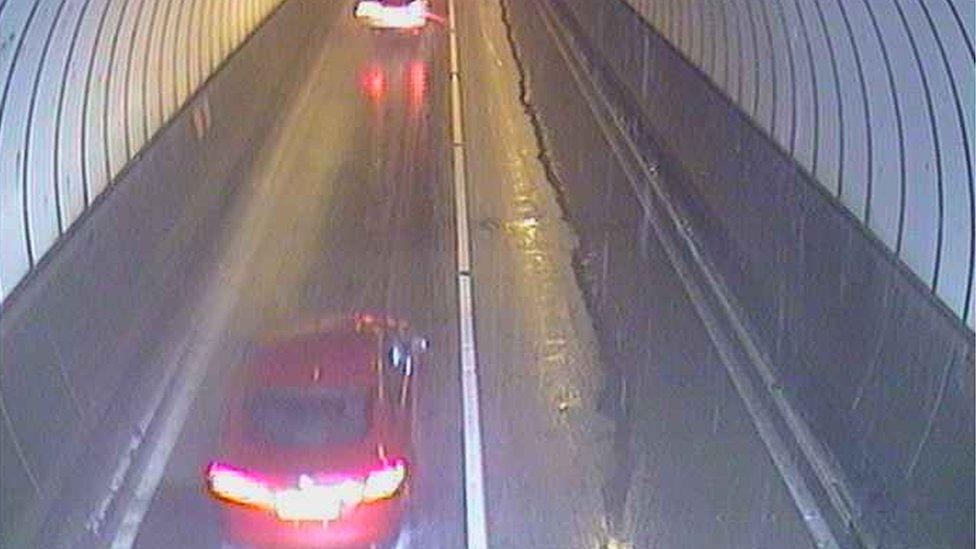
- Published1 January 2016

- Published31 December 2015
